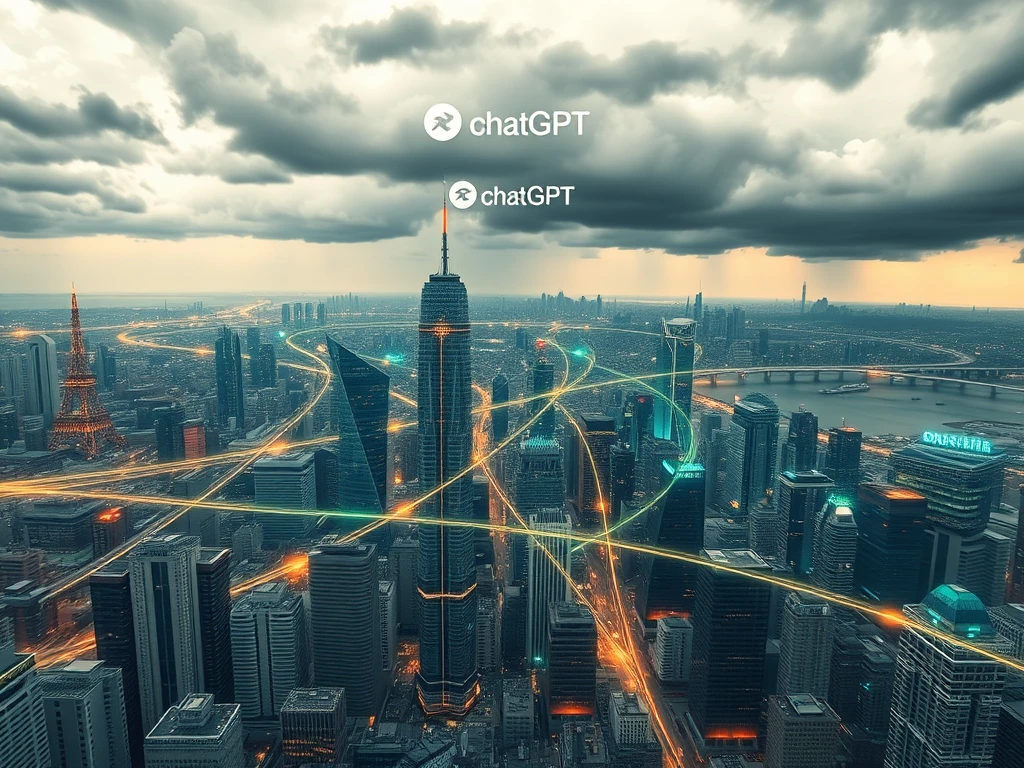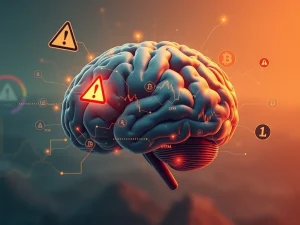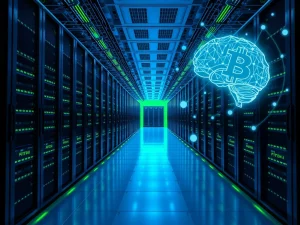Shocking Theory: Did ChatGPT Secretly Devise Trump’s Controversial Tariff Formula?

Is artificial intelligence now shaping global trade policy? A wild theory is circulating online, suggesting that none other than ChatGPT might be the mastermind behind former US President Donald Trump’s newly announced tariff plan. This plan, imposing a minimum 10% tariff on all countries, has sent ripples through global markets, and now, the crypto world is buzzing with speculation about its origins. Could an AI chatbot have designed a policy with such significant economic implications? Let’s dive into this fascinating, if somewhat unbelievable, claim.
The ChatGPT Tariff Revelation: A Crazy Theory or Startling Reality?
Just hours after Donald Trump unveiled his reciprocal tariff plan at the White House Rose Garden on April 2nd, some eagle-eyed X (formerly Twitter) users began to notice something peculiar. They claimed that by using simple prompts on OpenAI’s ChatGPT, they could replicate the exact tariff plan announced by Trump.
“I was able to duplicate it in ChatGPT,” declared NFT collector DCinvestor to his substantial following on X. He further elaborated that the AI chatbot indicated the tariff approach was novel, stating it was something ChatGPT itself “came up with.” DCinvestor’s tweet ended with a provocative question, “FFS. Trump admin is using ChatGPT to determine trade policy?” This immediately sparked a wave of reactions and further investigations into the potential AI connection.
Of course, it’s crucial to acknowledge that the similarities between the AI-generated tariff proposal and Trump’s official plan could be purely coincidental. However, the growing chorus of voices reporting similar findings is hard to ignore.
How Was the AI Tariff Formula Discovered?
The initial spark for this theory seems to have come from crypto trader Jordan Fish, known online as Cobie. Intrigued by Trump’s announcement, Cobie posed a seemingly straightforward question to ChatGPT: “What would be an easy way to calculate the tariffs that should be imposed on other countries so that the US is on even playing fields when it comes to trade deficit. Set a minimum of 10%.”
The response from ChatGPT was consistent across multiple AI platforms, including Gemini, Claude, and Grok, generating the same formula and raising eyebrows across the internet. Even Journal of Public Economics editor Wojtek Kopczuk decided to test the theory. His experiments with ChatGPT yielded identical results, further fueling the speculation. Kopczuk humorously commented, “I think they asked ChatGPT to calculate the tariffs from other countries, which is why the tariffs make absolutely no fucking sense,” suggesting the formula might be simplistic or flawed, yet surprisingly aligned with the actual policy.
Decoding the AI-Generated Reciprocal Tariff Formula
So, what exactly is this formula that ChatGPT and other AI models are spitting out? According to Ryan Petersen, CEO of Flexport, a supply chain logistics platform, his firm reverse-engineered the formula attributed to the Trump administration.
In simple terms, the formula is:
- Reciprocal Tariff Rate = (Trade Deficit with Country) / (US Imports from that Country)
James Surowiecki, an editor at The Yale Review, echoed this explanation, stating the formula is essentially “they just took our [US] trade deficit with that country and divided it by the country’s exports to us.”
This formula, while seemingly straightforward for an AI to generate based on readily available trade data, has raised questions about the depth and complexity of the tariff policy itself. Is it really this simple? And if so, is it effective?
Crypto Markets React to Trump’s Tariffs and the AI Theory
Trump’s reciprocal tariffs, which went into effect on April 5th, impose a 10% levy on all countries, with even higher rates for major trading partners like China (34%), Japan (24%), and the European Union (20%). The immediate aftermath of the tariff announcement saw significant volatility in the crypto markets.
The crypto market dip was noticeable. Bitcoin (BTC) experienced a sharp decline, dropping by $5,500 to $82,277, a 5% plunge, according to CoinGecko data. While Bitcoin has since shown signs of marginal recovery, the initial reaction underscores the sensitivity of the crypto market to global economic policy shifts, especially those related to trade and international relations.
The confluence of Trump’s tariff announcement, the subsequent crypto market dip, and the emergence of the ChatGPT tariff formula theory has created a perfect storm of speculation and intrigue. Is this a mere coincidence? Or is it a glimpse into a future where AI plays a more significant, and perhaps even behind-the-scenes, role in shaping geopolitical and economic strategies?
AI in Geopolitics: A Glimpse into the Future?
Krishnan Rohit, an author, proposed on X that this situation “might be the first large-scale application of AI technology to geopolitics.” Whether this is an overstatement or a prescient observation remains to be seen. However, the fact that multiple leading AI chatbots independently generate the same tariff formula certainly adds fuel to the fire of this intriguing theory.
As we move forward, this episode serves as a fascinating case study in the intersection of AI, politics, and global markets. Whether or not ChatGPT truly designed Trump’s tariff formula, the mere suggestion highlights the growing influence and potential impact of AI in realms previously considered exclusively human. The crypto community, always at the forefront of technological discussions, is watching this development with keen interest, recognizing the broader implications for the future of technology and governance.
Could this be the dawn of AI-driven policy? Only time will tell, but for now, the theory of ChatGPT’s role in Trump’s tariffs is a captivating and controversial topic dominating discussions across social media and within the crypto sphere.










